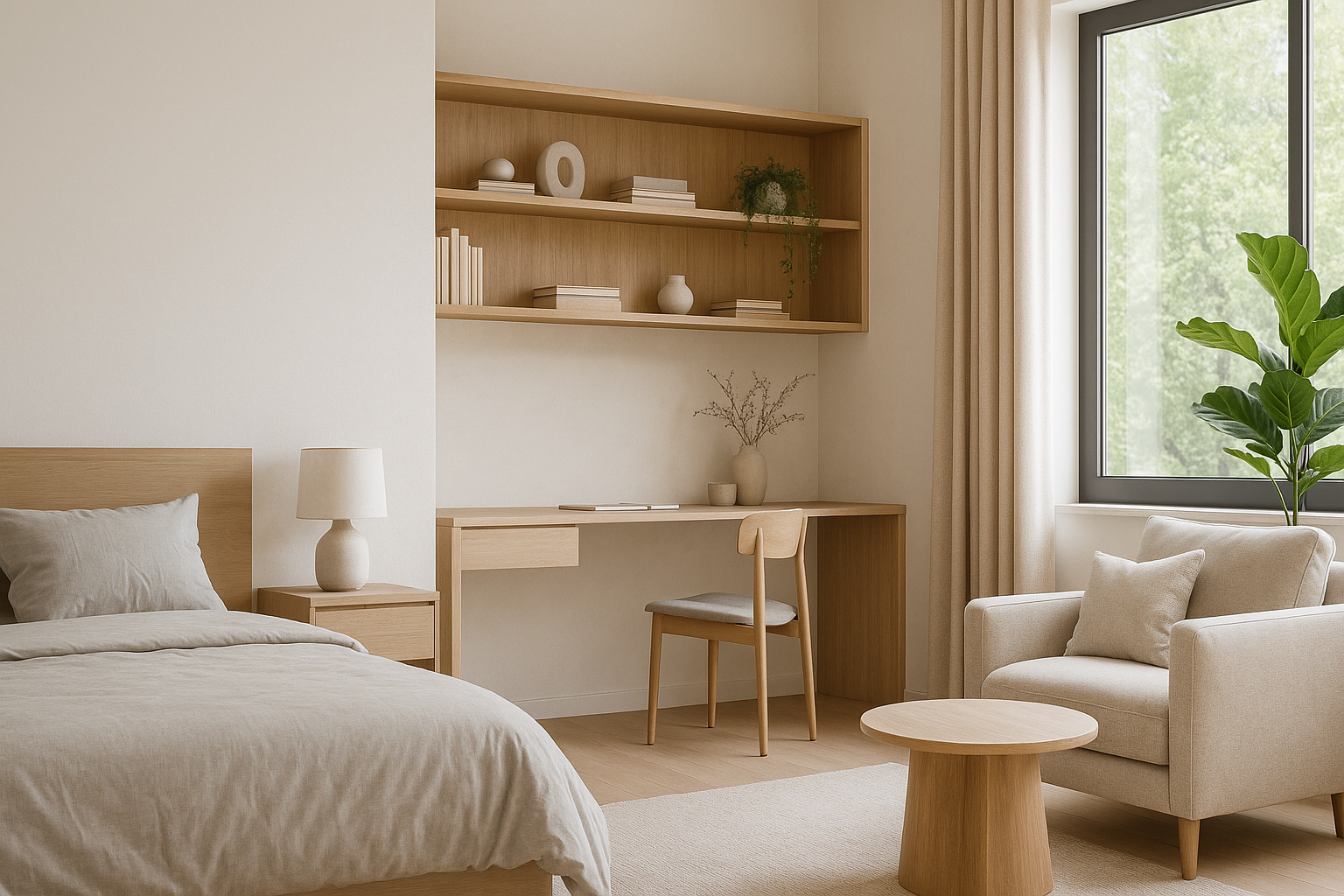In the world of modern living, space is no longer just about size—it’s about purpose. As more people work remotely, practice mindfulness at home, and seek smarter design, the bedroom has evolved into more than a sleeping zone. It’s now a place to relax, work, recharge, and reconnect with oneself.
Whether you’re an architect designing for compact homes or a homeowner looking to maximize every inch of your space, here are 8 multifunctional bedroom design ideas to help you create a flexible, well-balanced haven.
1. Start with Purpose-Driven Zoning
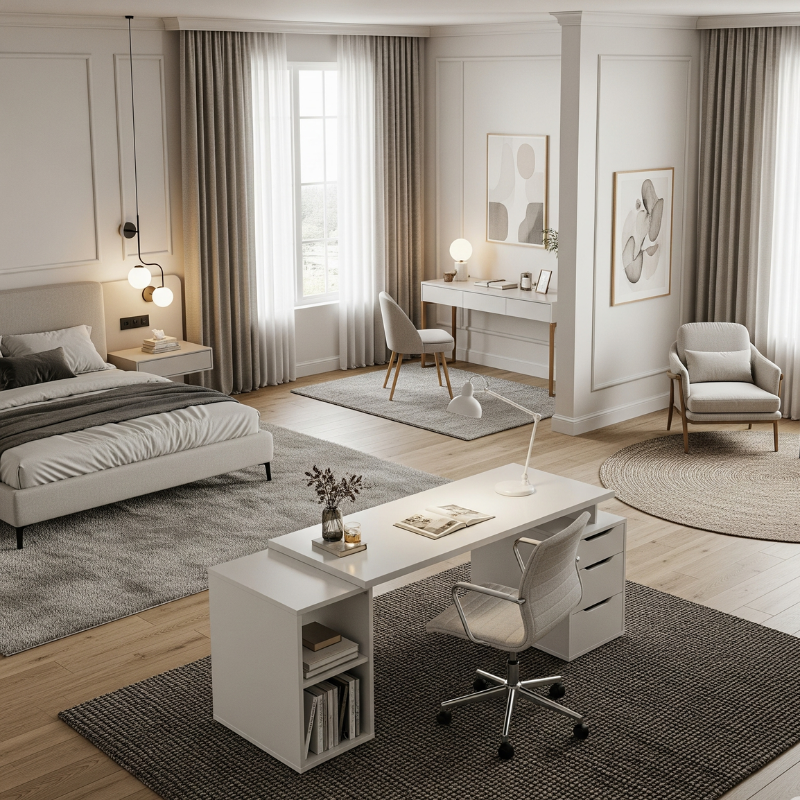
The foundation of a multifunctional bedroom begins with defining zones. Think of your bedroom in segments:
- Sleep zone (bed and nightstands)
- Work or study zone (desk or built-in nook)
- Recharge or wellness zone (reading corner, yoga mat, or meditation space)
Use area rugs, lighting, or even subtle changes in wall treatments to visually separate these zones without using physical dividers that can make the space feel smaller.
2. Choose Flexible, Multi-Use Furniture
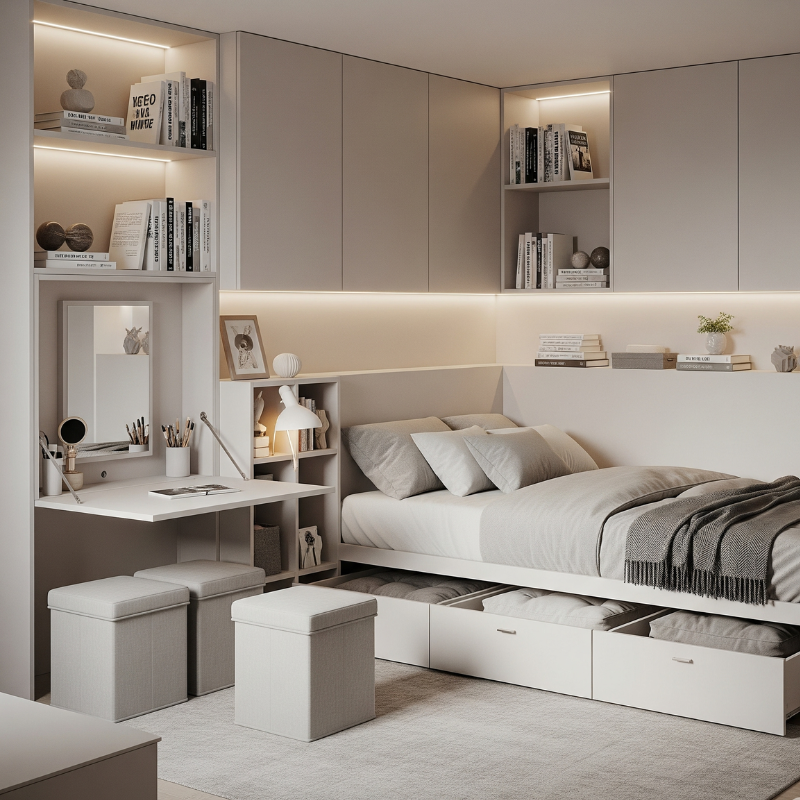
When space is limited, every piece of furniture should work harder. Look for:
- Beds with under-storage drawers or lift-up bases
- Fold-down desks that double as vanities
- Storage ottomans that act as seating and hidden compartments
- Bookshelves with built-in lighting that double as workspace lighting
Multipurpose furniture reduces clutter and allows your bedroom to adapt to different needs throughout the day.
3. Keep the Color Palette Cohesive
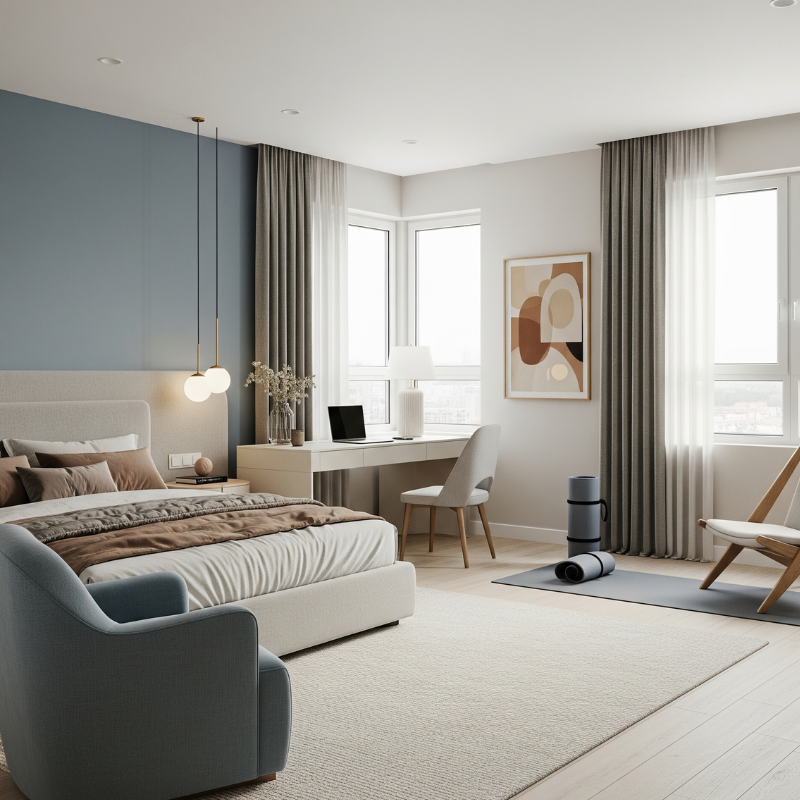
Even in a multifunctional room, visual harmony is essential. Choose a calm, consistent color scheme across all zones to maintain flow and reduce visual noise.
Earthy tones, muted blues, soft grays, and creamy whites help create a peaceful environment that supports both productivity and rest.
Accent each zone with subtle changes—perhaps a pop of olive in the work corner or textured linen bedding in the sleep area—but stay within the same palette.
4. Optimize Lighting for Each Function
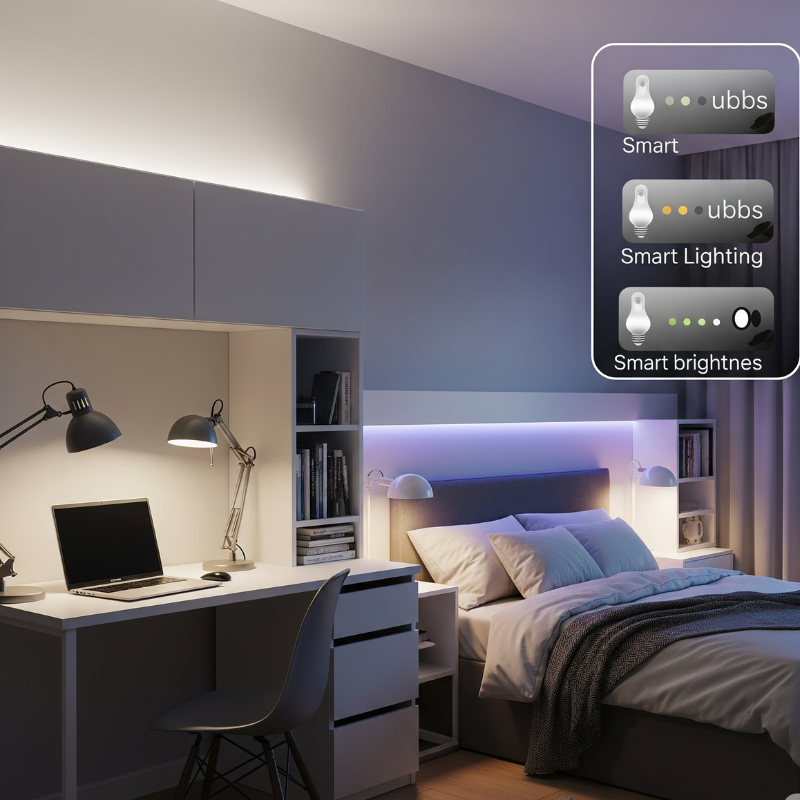
Lighting plays a vital role in how each part of the bedroom performs. Aim for layered lighting:
- Task lighting (adjustable desk lamps, wall-mounted sconces)
- Ambient lighting (soft ceiling lights, pendant lamps)
- Mood lighting (LED strip lights behind headboards or under shelving)
Use smart bulbs or dimmers so you can adjust the mood depending on whether you’re working, reading, or winding down for the night.
5. Incorporate Built-In Storage
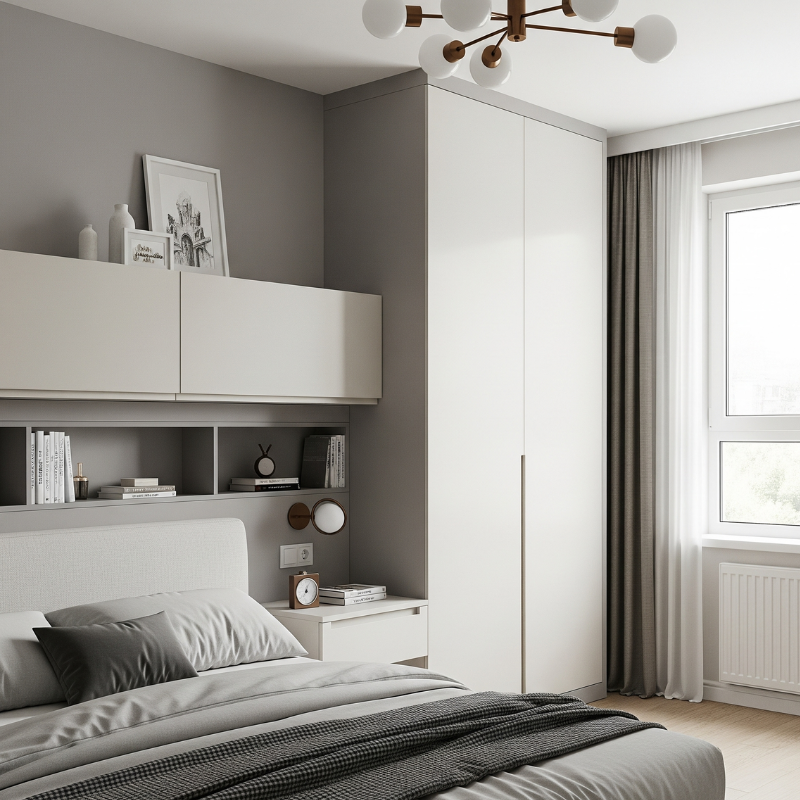
Clutter is the enemy of functionality. If you’re designing from scratch or renovating, built-in wardrobes, headboard shelves, and floating cabinets can free up floor space and create clean, custom lines.
A recessed work nook with overhead shelves is a great solution for small bedrooms—it keeps the workspace defined yet doesn’t overpower the room’s aesthetics.
6. Design a Compact Yet Inspiring Work Corner
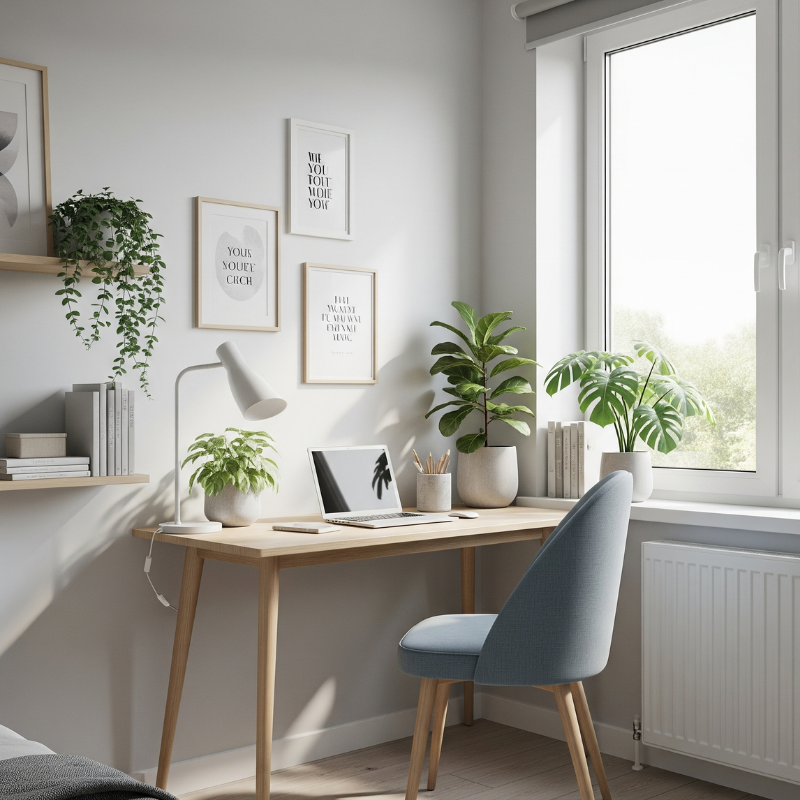
Remote work has become the norm, and for many, the bedroom is the quietest place to set up a desk. But that doesn’t mean it has to feel corporate.
Use a minimal desk, a comfortable (yet sleek) chair, and accessorize with plants, framed prints, or even acoustic panels. Facing the desk toward natural light—or a calming wall—can help reduce eye fatigue and improve productivity.
Pro tip: Hide cords and tech accessories using cable organizers or furniture with built-in power outlets.
7. Create a Wellness or Recharge Zone

A truly multifunctional bedroom isn’t complete without a space for self-care.
This could be
- A floor cushion and low table for meditation
- A yoga mat that rolls out in a designated corner
- A cozy chair with a throw for reading or journaling
Keep this area minimal but intentional. Soft textures, calming colors, and natural elements like a small plant or diffuser can help establish a ritual of mindfulness.
8. Embrace Vertical Space
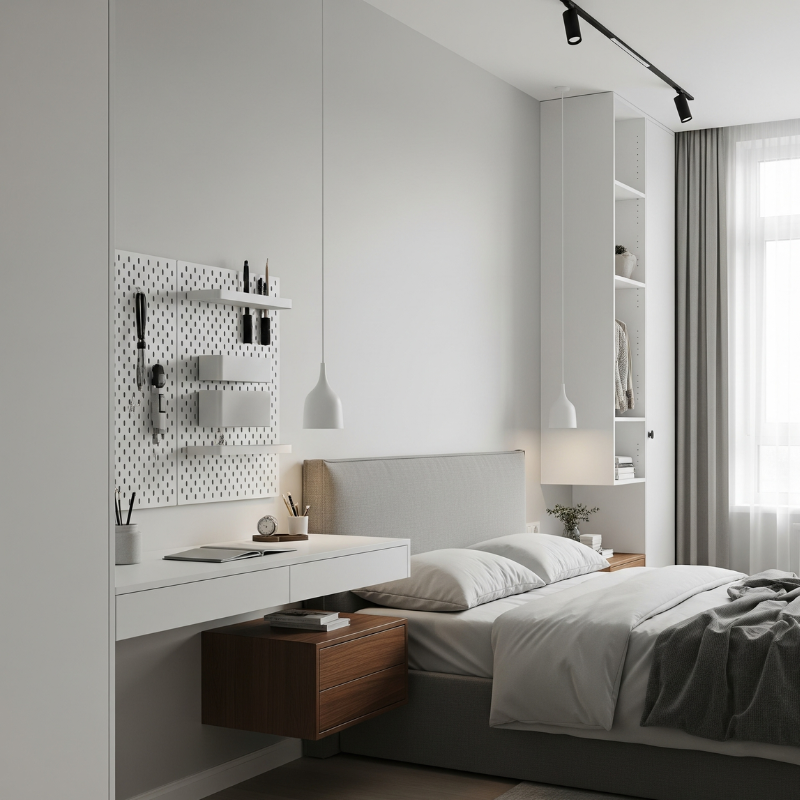
When floor space is limited, look up. Use vertical real estate for:
- Wall-mounted nightstands
- Pegboards above the desk for tools and decor
- Tall wardrobes or open shelving units
Not only does this create more storage, but it also draws the eye upward, making the room feel more expansive.
Final Thoughts
Designing a multifunctional bedroom is about balance—balancing rest and activity, work and wellness, and form and function. With thoughtful zoning, smart furniture choices, and a harmonious aesthetic, your bedroom can become a versatile retreat that enhances your daily routine.
Whether you’re living in a studio apartment or designing a guest bedroom that doubles as a workspace, these tips can help you achieve a space that supports every aspect of modern life—without sacrificing style or serenity.
Looking for more architecture and interior tips for compact living?
Explore more ideas and expert insights at ideasforarchitecture.com—where design meets intention.
.





